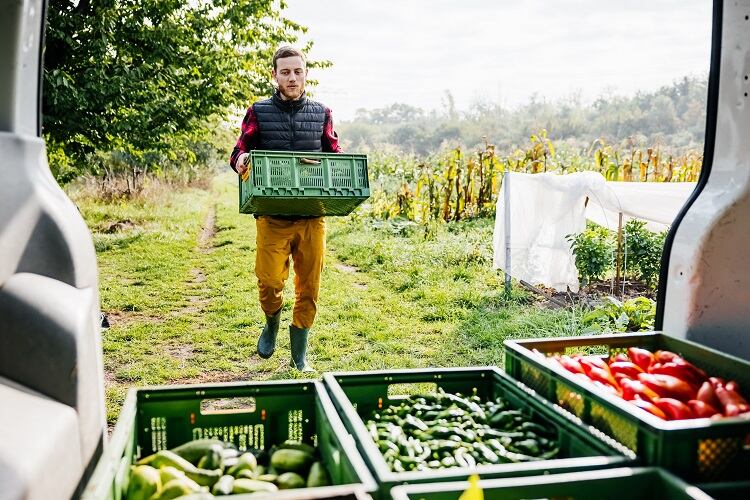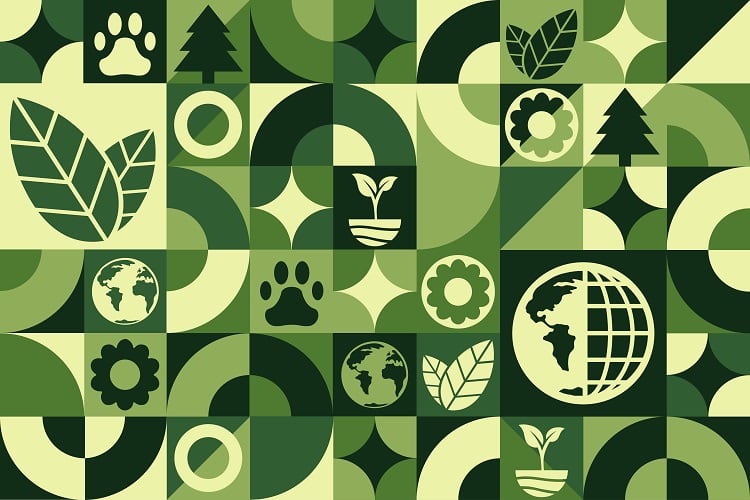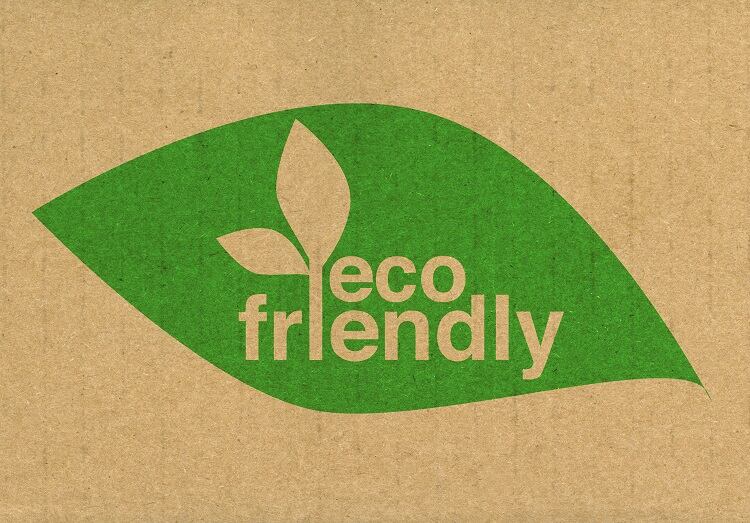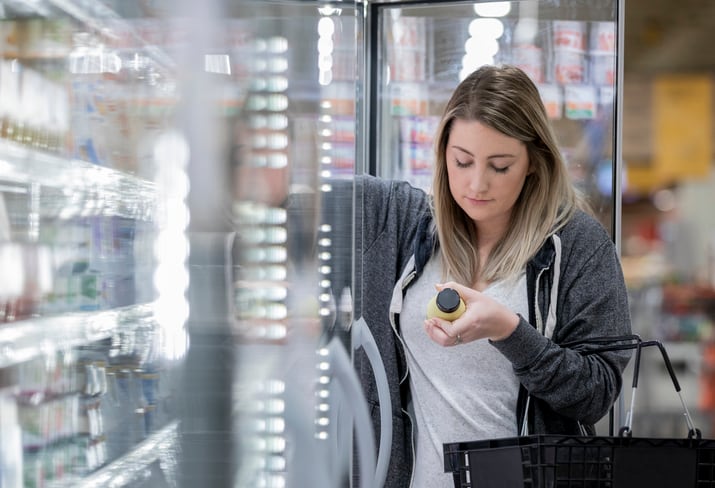The organisations raised their concerns by sending a letter to the Right Honourable Steve Barclay MP, Secretary of State for Environment, Food and Rural Affairs in the UK Government.
Their letter outlined a range of criticisms of newly released eco-labelling guidelines from food sector group Institute of Grocery Distribution (IGD), saying they mislead consumers, are too heavily weighted towards a focus on carbon while not paying enough attention to biodiversity, soil and water health, and animal welfare, and could lead to unintended environmental outcomes.
The purpose of the guidelines
IGD’s guidelines have two main goals: to help consumers make sustainable decisions, and to help businesses provide transparent information on the environmental impact of their supply chains. The research conducted by IGD for the guidelines will inform UK Government’s consultation of ecolabelling planned for 2024. With a proliferation of different eco-labels on the market, the guidelines also aim to provide some form of framework for them to follow.
Recommendations made by IGD include to use a Life Cycle Assessment-based approach, covering climate change, water quality, water use and land use impacts of products; introduce an A-E label on products to influence consumer buying habits; and to introduce ‘robust governance’ on operationalising labelling within agreed standards. The organisation worked with technical experts and consumer research agencies, and studied existing labelling schemes, to develop the methodology.
While the letter praised the government’s plans for mandatory eco-labelling, and in particular, the efforts of the Food Data Transparency Partnership (FDTP), it drew up a number of criticisms of IGD’s guidelines, whose influence could be felt at policy level in future if the Government takes its recommendations into account.
Search for a fuller picture
Firstly, according to the letter, the guidelines, by only focusing on four criteria, do not present the complexity of potential environmental impacts that different products can have. Thus, the methodology has caused the data to be, in the words of the letter, ‘dumbed down.’
“IGD, along with other promoters of eco labels, accept that there is not sufficient primary data to bring meaning at this stage and that this is a crucial missing link,” Fidelity Weston, Chair at CLEAR, told FoodNavigator. “Surely they should be ensuring they support schemes that are looking at getting this data and not glossing over it.”

According to Weston, there is a range of ongoing research that could be incorporated into eco-labelling guidelines. For example, the Global Farm Metric (GFM), a framework through which to monitor farms’ sustainability methods, has been looking into what it is reasonable to ask farmers to do in regards to sustainability and animal welfare data, working with farmers, food producers and suppliers to ascertain this. CLEAR has also commissioned independent research, due for publication in mid-2024, that compares different eco-labels and their claims. This research, Weston stated, should be taken into account by government policy.
IGD, while accepting there is limited data available, stressed the need to be practical. “It is widely recognised that the quality and availability of data regarding environmental impacts is currently limited. We have, therefore, sought to take a pragmatic approach whilst proposing that any scheme can evolve as data improves.”
“It is widely recognised the quality and availability of data regarding environmental impacts is currently limited. We have, therefore, sought to take a pragmatic approach whilst proposing that any scheme can evolve as data improves.”
Thus, it focused on three main criteria: how significant given data is, how it resonates with consumers, and the availability and quality of the lifecycle data.
In response, in particular, to criticisms over the lack of certain elements, such as animal welfare, pesticide use, palm oil and sustainable fisheries, IGD stated its guidelines “do not capture acute impacts unique to specific products” because there are “existing certification schemes like RSPO, MSC, Rainforest Alliance (and) Fairtrade (that) continue to have value in these cases.”
Land use vs. biodiversity
A key contestation in the letter is the guidelines used the term ‘land use’ as a ‘proxy’ for biodiversity. This could, the letter stated, lead to ‘perverse consequences’.
“Land use is extremely complicated with a multitude of aspects to its biodiversity potential,” Weston told us. “A huge cereal field that is cropped year in year out on the back of chemicals and mechanical ploughing will be far less diverse than the same cereal field that is cropped with the use of cover crops, grazed by cattle and rotated to build fertility and soils. Using ‘land use’ simply does not reflect this important difference. Taking method of production does.”

However, according to the IGD, “there is no established or rigorous way of analysing biodiversity, and so we have used land use as the best measure currently available to assess these impacts. We recommend that all metrics should be reviewed periodically to ensure they remain up to date with global science and policy frameworks and are still the best measure available.”
Input efficiencies
According to the letter, the heavy focus on input efficiencies in the guidelines has the potential to lead to intensive production methods. “Put simply,” Weston expressed, “do we as society want to have intensively produced crops and animal products producing crops that are not prioritising the need for regenerated soils, clean water, animal welfare, good human health?
“Increased input efficiencies can be achieved by low inputs and diverse cropping plans. It is not one thing or the other – it is a question of how we view value.”
“Put simply, do we as society want to have intensively produced crops and animal products producing crops that are not prioritising the need for regenerated soils, clean water, animal welfare, good human health?"
However, according to IGD, such intensive methods are not necessarily worse for the environment. “In many cases, the environmental impact of intensively produced food is lower than food produced via extensive methods,” it told us, “although this is not well understood by consumers – indeed our own consumer research showed that consumers were surprised by some product scores, for example assuming organic or higher welfare sausages would be lower in scoring than standard sausages.
“We recognise there are some limitations in the data and metrics currently available, and the importance of existing certification schemes in supporting consumer choices.”
An industry-led initiative
One of the most prominent criticisms in the letter was on the fact the guidelines were heavily industry-led, and consultations with organisations such as theirs, they said, were largely ignored.
“There is a great deal of work going on at farm and NGO level to look at how we could all be measuring and providing data that more accurately reflects the sustainability of our farms,” CLEAR’s Weston told FoodNavigator, giving the example of the GFM. “This has been ignored.
“If the food manufacturers wanted to do some real good in supporting farms moving to more sustainable methods of production, they could be supporting such initiatives and putting their money into this development. As it is they are making a proposal that will maintain the status quo.”
One of the key criticisms given by Sustainable Food Trust and CIWF is that, according to them, IGD’s reference to consulting them implies they agreed with the guidelines, when this is not the case.
“We are happy to pursue dialogue with industry and respond to requests for consultation,” Dr. Nick Palmer, Chief Policy Strategist at CIWF, told FoodNavigator. “However, it’s important that this shouldn’t be taken to imply that we necessarily agreed. If I consult my partner on whether we should buy Corn Flakes or Rice Krispies and then do the opposite, it is true that she has been consulted, but she might not feel that her preference had been represented in the outcome.”
However, IGD emphasised it had not only consulted a wide range of sources when drawing up its guidelines, but also the results of these consultations were present in them. “Everything we have learned and heard during the extensive consultation process is reflected in our recommendations,” it told us. “We will continue to take on board views from a wide range of experts and the evolving evidence available.
“It has been important to listen to that range of different views – we’ve spoken to hundreds of people from industry, academia, life-cycle assessment experts, nutritionists, NGOs etc. and have received over 350 different pieces of feedback. This has helped us learn and has informed the development of our recommendations.”




